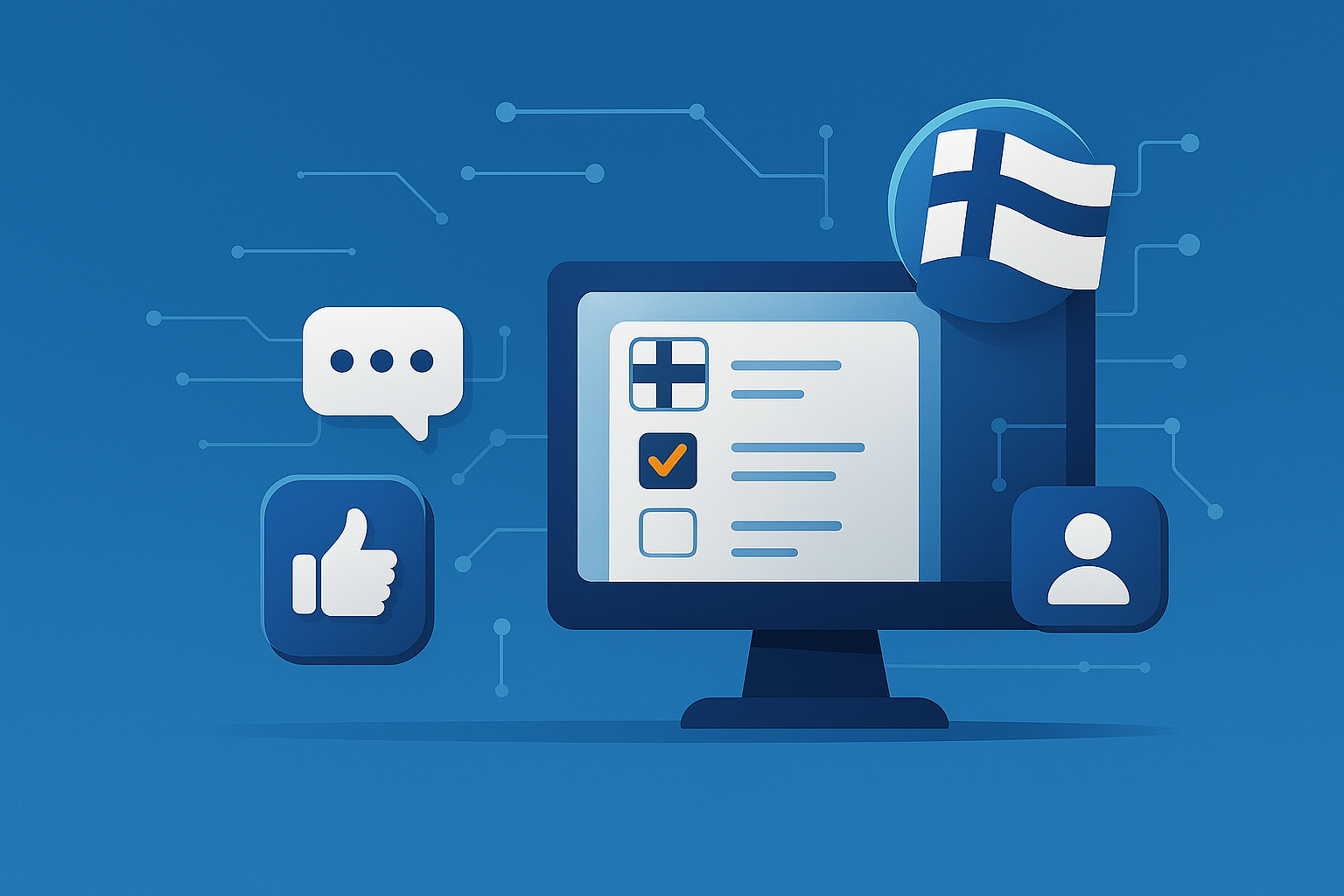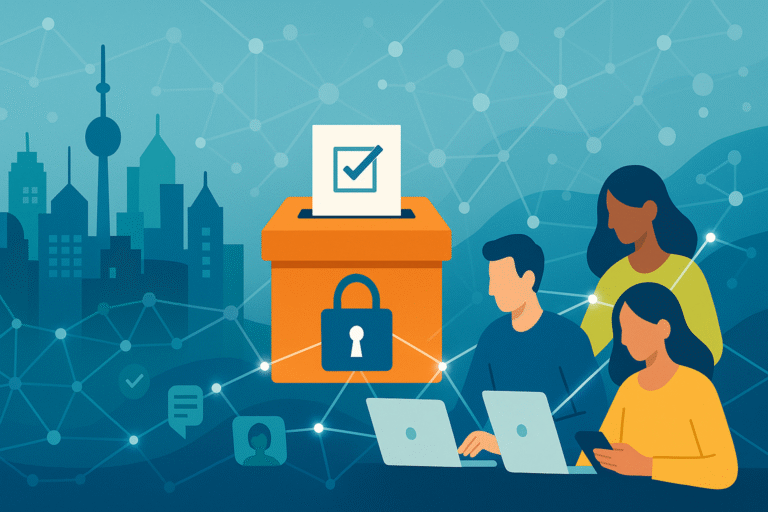
Introduction
Finland is often cited as one of the most advanced countries in the world when it comes to digitalization. With a strong education system, significant investment in technology research, and high levels of trust in institutions, the Nordic country has become a natural laboratory for experimenting with digital democracy solutions.
But what does “digital democracy in Finland” actually mean? Which tools are being used to encourage citizen participation, and what lessons can other European countries, including Italy, learn from this experience?
The Finnish context
Finland has a long tradition of transparency and trust in its institutions. This cultural background has facilitated the adoption of digital tools in civic and administrative contexts.
According to the UN and the European Commission, Finland consistently ranks among the top countries for e-government and open data, showing a strong capacity to make institutions more accessible through technology.
In this environment, digital democracy is not regarded as a mere technological experiment, but as an integral part of public policy and governance.
Digital participation tools
Over the past years, Finland has developed and promoted several platforms to strengthen civic participation:
- Kansalaisaloite.fi: a national platform that allows citizens to submit legislative initiatives. If a proposal gathers at least 50,000 digital signatures, Parliament is required to discuss it (Kansalaisaloite.fi – Citizens’ Initiative Platform).
- Otakantaa.fi: a portal where citizens, associations, and institutions can take part in public consultations on political and administrative issues (Otakantaa.fi – Public consultation portal).
- Allianssi: the Federation of Finnish Youth Organizations, coordinating youth participation projects and serving as a national reference point for civic engagement among young people (Allianssi – Federation of Finnish Youth Organizations).
These tools have fostered a culture of bottom-up participation, expanding engagement opportunities beyond traditional channels.
Concrete success stories
- The Equal Marriage Act (2017) was debated in Parliament thanks to an initiative launched on Kansalaisaloite.fi, which collected well over the 50,000 required signatures.
- Through Otakantaa.fi, citizens and associations contributed to debates on complex issues such as energy transition and healthcare reform.
- Thanks to Allianssi, numerous youth proposals on environment, education, and civil rights have reached institutional decision-makers.
These examples show how digital participation can lead to tangible changes, influencing both legislative processes and local decision-making.
Advantages of digital democracy in Finland
- Inclusion: tools designed to be accessible to young people and minorities.
- Transparency: clear processes, with publicly available data and results.
- Speed: collecting digital signatures reduces both time and costs compared to traditional methods.
- Engagement: higher levels of civic participation compared to many other European countries.
These benefits reinforce the perception of digital democracy as a natural complement to representative democracy.
Challenges and critical issues
- Digital divide: not all citizens have the same level of digital skills, especially among older age groups.
- Cybersecurity: the collection and management of digital signatures require robust protection systems.
- Unequal participation: these platforms are more often used by politically active citizens, potentially excluding those with less time or interest.
These challenges highlight that technology alone is not enough: there must be continuous investment in civic and digital education.
Comparison with other countries
When compared with other European countries, Finland stands out significantly:
- In Italy, digital democracy tools remain fragmented and experimental (What is digital democracy and why it matters today).
- Estonia has made great progress in online voting (Estonia and online voting: a model to study), but it does not have a national initiative platform comparable to Kansalaisaloite.
- In Spain, platforms like Decide Madrid have had strong local impact, but less continuity at the national level.
Finland distinguishes itself by having integrated digital participation deeply into its political system.
Future perspectives
Looking forward, Finland aims to strengthen the use of artificial intelligence to improve the quality of consultations—for example, by synthesizing citizen contributions or simplifying complex legislative texts.
Another priority is to improve accessibility for different linguistic communities while enhancing data protection and security guarantees.
Reflections for Concorder
The Finnish experience provides valuable lessons for platforms like Concorder, which aims to make digital participation simpler and more transparent.
Just as Kansalaisaloite allows citizens to submit digitally certified proposals, Concorder could one day provide tools for verified collective initiatives, integrating security, traceability, and automatic synthesis of contributions.
This approach would not only draw inspiration from the Finnish model but also adapt it to local contexts, supporting participatory culture in neighborhoods, associations, and communities.
Conclusion
Finland stands as a reference model for digital democracy: not only for the technologies employed, but for the ability to integrate them into a political system based on trust, transparency, and inclusion.
Digital platforms do not replace representative democracy; they strengthen it by creating new participation spaces. This is why studying the Finnish case can be useful for any country aiming to improve the quality of democratic life.


